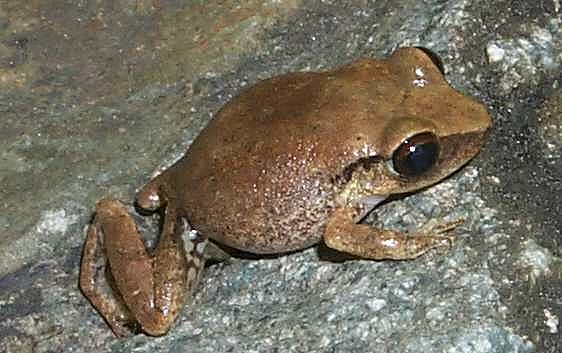Facts About Red-eyed coqui
The red-eyed coqui, also known as churi, coqui churi, or coqui de las Antillas, is an intriguing frog species from the Eleutherodactylidae family. Native to Puerto Rico and the British and U.S. Virgin Islands, it has also established a presence in Panama. This frog stands out due to its distinctive physical traits, habitat preferences, and behaviors, setting it apart from other members of the Eleutherodactylus genus. This genus encompasses about 185 species found in the southern United States, Central America, South America, and the Caribbean, with 16 species endemic to Puerto Rico.
The red-eyed coqui made its way to Panama City in the late 1960s. Initially settling in urban parks, it expanded beyond the city by the 1980s. In Puerto Rico, it can be found at elevations up to 1,200 meters above sea level. This frog is easily identifiable by its angular head, cinnamon-red eyes, black-spotted thighs, and distinctive body markings. Unlike the common coqui, the red-eyed coqui thrives in dry habitats and can endure long periods without rain, as long as it stays hydrated in its hiding spots.
These frogs are nocturnal predators, preying on insects, spiders, and other small creatures. At night, males call to attract mates. Their reproduction is quite unique—they do not require water for breeding. Females lay eggs that hatch into miniature replicas of the adults.
Although listed as "least concern" on the IUCN Red List, the red-eyed coqui's survival is supported by the availability of suitable habitats across its range. The increasing forested areas in Puerto Rico have also helped maintain their population stability. Interestingly, the Cuban tree frog, a predator of the red-eyed coqui, plays a role in regulating its population.
